Context:
The Okha is a coastal town and port in Dwarka district of Gujarat state in India. Dwarka is often identified with the Dwarka Kingdom, the ancient kingdom of Krishna, and is believed to have been the first capital of Gujarat. Its present capital is Gandhinagar named after Mahatma Gandhi (See Section IV).
Dwarka is one of the foremost four sacred Hindu pilgrimage sites, and is one of the seven most ancient religious cities in India. It is also called Mokshapur. See Moksha River in Central Russia. Bet Dwarka Island is a major Hindu pilgrimage site situated 3 km. across a creek from Okha port. It is the mouth of Gulf of Kutch that is an inlet of the Arabian Sea along the west coast of India.
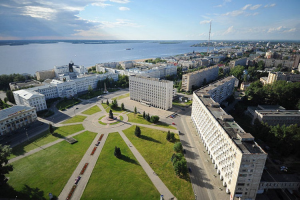 In the end of Gulf of Kutch, there is Navlakhi port. Pur-Navolok is the former name of Russian Arkhangelsk (city of Archangel) having similar location but in the delta of the Northern Dvina River near its exit into the White Sea. Not by chance, Arka is synonyms of Sun god Surya, see Section V. Until the foundation of Saint-Petersburg, Arkhangelsk (Pur-Navolok) was the chief trade seaport of Russia.
In the end of Gulf of Kutch, there is Navlakhi port. Pur-Navolok is the former name of Russian Arkhangelsk (city of Archangel) having similar location but in the delta of the Northern Dvina River near its exit into the White Sea. Not by chance, Arka is synonyms of Sun god Surya, see Section V. Until the foundation of Saint-Petersburg, Arkhangelsk (Pur-Navolok) was the chief trade seaport of Russia.
Koch was a special type of small one or two mast wooden sailing ships designed and used in Russia for transpolar voyages in ice conditions of the Arctic seas without being damaged in the waters full of ice blocks and ice floes. The name Koch has similarity to the Kutch (gulf) in Hindi, also spelled as Kachchh.
Today it is well known that the Arctic region is rich with natural resources, in particular oil and gas deposits. Russia produces almost 100 million tons of oil per year in the Arctic zone. Russian Arctic Shelves may account to 100 billion tones of gas and oil deposits that are to 80% of Russia’s potential oil and gas reserves. The world’s largest oil refinery owned by Reliance Industries is located in Jamnagar district, Gujarat, in Saurashtra (region), the Gulf of Kutch.
Gujarat has its own Nara River with the source near Walka village. Nara is a river in Moscow region. This Nara River is a part of the Volga basin. The names Walka and Volga surely bear similarity. Being the longest river in Europe and the national river of Russia, the Volga River starts in Tver region. Names Tver and Dwarka share similar meaning. In Sanskrit, Dwar means ‘gate‘. See Sanskrit names in Tver region.
In Sanskrit, the word ‘valga’ (that is quite close to Volga) has several meanings, including veils or artery, one who veils or covers, etc. Indeed, Volga is Europe’s largest river in terms of discharge and watershed.
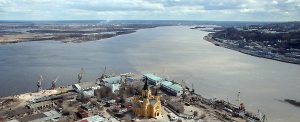 The Oka (right) is a major tributary of the Volga (left). In Sanskrit, oka means ‘conjunction of heavenly bodies’.
The Oka (right) is a major tributary of the Volga (left). In Sanskrit, oka means ‘conjunction of heavenly bodies’.
As it is said above, Volga is the longest and the largest river in Europe. It is the national river and symbol of Russia (often called Mother Volga). Eleven of the twenty largest cities of Russia, including the capital Moscow, are located in the Volga’s watershed.
In Russian, Oka is similar to Oko that means an ‘eye’. See about the eye of Odin, Horus, Ra and The All-Seeing Eye. In the first centuries of Common Era the Volga was called Ra (Rha) that may reflect the ancient Avestan and Sanskrit names Rañha and Rasah for a sacred river.
Valga is a Sanskrit word for bridle, rein. Horse worship was exclusively associated with Indo-European culture. In India, horse worship (Hayagriva) dates back to 2000 BC, when the Indo-Aryan people started to migrate into the Indus valley from Eurasian steppes.
Okha
As it is said in Section I, Okha is a coastal town and port in Indian state Gujarat. Also, there is Okha in Russia.
Okha is a town located on the east coast of the far north of Sahalin Island, near the shoreline of the Sea of Okhotsk of the Pacific Ocean. In Sanskrit, the word ‘Saha’ has several meanings: ‘powerful’, ‘conquering’, ‘together with’, etc.
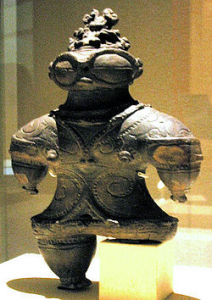 Kuril Islands are a part of Russia’s Sakhalin region. They separate the Sea of Okhotsk from the Pacific Ocean. It is believe that name Kuril originates from the islands’ original inhabitants word ‘kur’, meaning ‘man’.
Kuril Islands are a part of Russia’s Sakhalin region. They separate the Sea of Okhotsk from the Pacific Ocean. It is believe that name Kuril originates from the islands’ original inhabitants word ‘kur’, meaning ‘man’.
Kuru is the imputed ancestral king of Indo-Aryan Kuru tribe, the ancestor of Kauravas and Pandavas, as depicted in epic Mahabharata. The holy region Kurukshetra is named after king Kuru.
Kur is the name of several settlements in the Middle East, India and the Caucasus. The most known Mesopotamian cradle of modern humanity — ancient Sumer was called ‘Kur-gal’ or ‘Great Land’. In Sumerian cosmology, Ekur was the most sacred place of ancient Sumer, the centre of the Earth and location where Heaven and Earth were united. It was the abode of the Annanuki and the assembly of the gods in their Garden. Much later this idea appeared in the Greek mythology as the story of the Mount Olympus and its celestial inhabitants.
Okhta River (Saint Petersburg)
The Okhta River (90 km.) is the largest right tributary of the Neva River. The Okhta joins the Neva within Saint Petersburg, located on the Nile meridian.
Okhota River (Khabarovsk Krai)
The city is located at the mouth of the Okhota River on the Sea of Okhotsk. It is used to be the main Russian base on the Pacific coast. The Okhota River is a river in Khabarovsk Krai, named after Khabarov who was a Russian 17th century adventurer, best known for his exploring the Amur River region. Khabarov was a native of Veliky Ustyug. The Amur has a tributary called Ukhta. Archangelsk region mentioned in Section I, has three rivers with such names. In Sanskrit, ‘uktha’ means praise, etc.
The length of the Okhota River is over 390 km. It starts in Suntar-Khayata Range that is granite mountain range rising along border of Sakha Republic in the north with Amur region and Khabarovsk Krai in the south. The Okhota River flows south to the Sea of Okhotsk at the town and port of Okhotsk. A main tributary of the Okhota River is the Arka River.
Arka is synonyms of Surya in ancient Indian literature. See Sura River in Ulyanovsk region of Russia. Arkaim is the world known Russian archaeological site in the Chelyabinsk region (the Southern Ural steppe) generally dated to the II-III millennium BC. It is considered to be an important center of the Indo-Aryan civilization. In Sanskrit, Arka has meanings related to the Sun and knowledge. Ark of the Covenant was given to Moses by God when the Israelites were encamped at the foot of biblical Mount Sinai. The top ocean is also called Arctic. The Arkansas River is a major tributary of the Mississippi River.
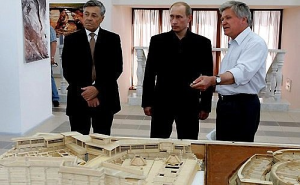 Arkaim is 8 km. from Amurskiy settlement named after the above mentioned river Amur. The site was visited by Russian President Vladimir Putin in 2005. In the same year in Gandhinagar (India) they developed the garden Punit Van where the planted trees have been associated with stars, planets and zodiac signs. In an Indo-Aryan language Gujarati, ‘punit’ means ‘holy’. See Section IV.
Arkaim is 8 km. from Amurskiy settlement named after the above mentioned river Amur. The site was visited by Russian President Vladimir Putin in 2005. In the same year in Gandhinagar (India) they developed the garden Punit Van where the planted trees have been associated with stars, planets and zodiac signs. In an Indo-Aryan language Gujarati, ‘punit’ means ‘holy’. See Section IV.
North of the source of Okhota River, on the other side of the Suntar-Khayata Range, another river called Hastah runs north to give start to the Indigirka River (~1730 km.) flowing into the Arctic Ocean. The name Hastah might be a corrupted Sanskrit word Hastin (elephant). Hastinapur was the capital of the Kuru Kingdom. Anyway, this place in Russia used to be a dwelling place of mammoths. Indigir is correlated to Sanskrit word induja or river and the modern word indigo. However, there is no single idea on the origin of the name Indigirka. Here ‘ka’ is just ending, but in the name Dwarka it references ‘Brahma’. ‘Indi’ and ‘gir’ are easily translated. In Sanskrit, ‘gir’ means ‘fame, celebrity, praise, mountain’, etc. Indi is India.
The modern name of the Suntar-Khayata Range could also be rooted in Sanskrit. For instance, sundara means beautiful, noble, etc. Santara means saunter or move slowly towards. Sanat Kumara is the head of the Spiritual Hierarchy of Earth who dwells in Shambala. As far as Khayata is concerned, the local Yakut (Saha) language belongs to the Siberian branch of the Turkic languages where khayat (or hayat) means yard. Sanskrit word ksayati means ‘rule’, ‘be the master of’, ‘have power over’, etc.
As it is said above, in Sanskrit, the word ‘Saha‘ has several meanings including ‘powerful’, etc. One of the coldest permanently inhabited locales on Earth is situated on the bank of the Indigirka River. It is name is Omyakon. Here day length varies from three hours in December to twenty-one hours in June. One really must be powerful or saha to live there.
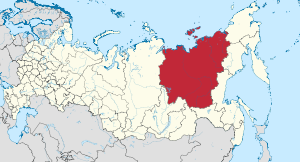 The Saha is the largest subnational governing body by area in the world (over 3 mln. km2). The Saha’s population is ~1 million. In comparison, India is over 3,2 mln. km2 for over 1,3 billion people. Approximately 99% of all Russian diamonds are mined here in Saha (Yakutia). Currently, Russia is the largest producer of the diamonds in the world (~ 1/3 of the market). Indian KGK Diamonds works in Saha.
The Saha is the largest subnational governing body by area in the world (over 3 mln. km2). The Saha’s population is ~1 million. In comparison, India is over 3,2 mln. km2 for over 1,3 billion people. Approximately 99% of all Russian diamonds are mined here in Saha (Yakutia). Currently, Russia is the largest producer of the diamonds in the world (~ 1/3 of the market). Indian KGK Diamonds works in Saha.
The Nera River (331 km.) is a main tributary of the Indigirka River. The largest settlement on the Indigirka River is the gold mining town of Ust Nera located on the mouth of Nera. Nehru was the first Prime Minister of independent India. Nero is a historical lake in Yaroslavl region in center of Russia. See Sanskrit names in Yaroslavl region.
The above mentioned Saha people or the Yakuts have Turkic origin. It is believed that they settled in the area in the 14th century, migrating north from the Lake Baikal. It is also stated that the name Saha is of Turkic origin, but the possible translations are rather strange — ‘cue’ or ‘bat’. On the other hand, in Sanskrit, the word ‘Saha’ has positive meanings: ‘powerful’, ‘conquering’, ‘together with’, etc.
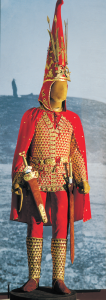 The Saka was the term used in Persian and Sanskrit sources for the Scythians dwelled on the Eurasian Steppe. The Sakas were Indo-Europeans. The earliest historical and archaeological records about the Sakas are dated around the 8th century BC. In Crimea, there is a town named after them Saki.
The Saka was the term used in Persian and Sanskrit sources for the Scythians dwelled on the Eurasian Steppe. The Sakas were Indo-Europeans. The earliest historical and archaeological records about the Sakas are dated around the 8th century BC. In Crimea, there is a town named after them Saki.
The so called «golden man» or saka royal person was excavated in Kazakhstan in 1969. It is dated approximately the 4th century BC. The burial mound was situated in eastern Scythia. It contained a skeleton, warrior’s equipment and various goods, including 4000 gold ornaments as well as a written text identified as Khotanese Saka dialect.
The burial place of the above «golden man» was around 50 km from Almaty / previous capital of Kazakhstan city of Alma-Ata (1929 to 1997), found by the Russians in 1854. It is the largest city in Kazakhstan, with a population of 1,8 mln people. The city is located in the mountainous area of southern Kazakhstan, where the Large and Small Almatinka rivers run into the plain.
Almaty is the Kazakh name of Alma-Ata. The name Almaty has its roots in the medieval settlement Almatu that existed near the present-day city in the Bronze Age (2nd — 1st millennium BCE). During that period Indo-European semi-nomadic steppe people (Saka tribes, etc.) lived here. The modern Kazakh people are their descendents.
There is no single version regarding the origin of the name Almaty. There is great genetic diversity among the wild apples in the region surrounding Almaty. Some believe that it is the apple’s ancestral home. Others try to connect the origin of name Almaty to the apple. It is stated that originally it was Almatau which means Apple Mountain. The Russian version of the name is Alma-Ata meaning in Kazakh language “Father of Apples”. By the way, “The Big Apple” is a nickname of New York that also has special ancient ties with Russia.
The roots of the term Almaty could be much deeper and more interesting. In Indian state Karnataka (having old ties with Russia), Almatti village has given its name to the Almatti Dam on the Krishna River. Krishna a Yadav, i.e. a descent from the King Yadu. River Yada is near the previous Russian capital city of Vladimir (lit. “One who rules the world”). As per the Aryan Varna, Krishna was a Kshatriya.
The burial place of the above «golden man» was less than 20 km from the town of Talgar in Almaty Region. It was important place located on the Silk Road. There are several possible explanations for the town’s name. Looking from above, Talgar is linked to Tagar.
40 km northwest of the burial place of the “Golden Man”, in the same Almay region, is the settlement called Tolkyn. In the Kazakh language, it means “wave, beauty, charm”. On the other hand, Tolkien is best known as the author of The Lord of the Rings and other classic high fantasy works. His great-great-grandfather came to England in the 18th century from Germany. Several families with the name Tolkien and its variants still live in the north-west of Germany, primarily in Lower Saxony and Hamburg. There is a version that this surname might be related the extinct Prussian language. From Prussia was Procopius the Righteous, the forefather of the Romanov Imperial House of Russia.
Born in South Africa John Tolkien (1892 — 1973) named his fantasy world Arda. It closely resembles the name Orda that was a historical sociopolitical and military structure found on the Eurasian Steppe, usually associated with the Turkic people and Mongols.
In esoteric teaching, AR is the so called Inner Sun (or the Black Sun, invisible and spiritual); RA is the Outer Sun (visible to the human eyes). Although, the term «Aryan» is linguistic, denoting speakers of Indo-Iranian / Indo-European languages, it is linked to the AR and Aryan center ARkaim in the Southern Urals. Tolkien’s Arda is the name given to the Earth in an imaginary period of prehistory. Arda includes the Sun, Moon, stars, and other objects. The Earth itself is called Ambar. In Russia, Iran, Turkey and the Balkans, it means a “granary”. In Sanskrit, Ambar is the “sky, garment”, etc.
Anagrams of Ambar are: Abram and Brama. Brahma (Brama) is the Hindu Creator god. In Hinduism, Brahman connotes the highest Universal Principle, the Ultimate Reality in the Universe. Interestingly, Abram was the original name of the first of the three Biblical patriarchs, who later became known as Abraham. Russian billionaire businessman and investor Roman Abramovich is best known outside Russia as the owner of Chelsea Football Club.
The Sakas migrated into Central Asia and then to the northwest of the Indian subcontinent where they were known as the Indo-Scythians. In the Tarim Basin and Taklamakan desert region of Northwest China, they settled in Kashgar and Khotan. They later found the ancient Buddhist kingdoms of Khotan, Kashgar, etc. in the Tarim Basin.
Khotan is considered to be the place where Nicolas Roerich received in 1925 a letter from the Mahatmas to the Soviet government and the casket with the sacred ground from a place connected with the life of Buddha. His full name was Siddhārtha Gautama Śākyamuni Buddha and he belonged to the Shakya clan of India that has been identified as Sakas.
Atman is a key term of born in India Jainism, Buddhism and Hinduism. Basically, it is used for description of the self and the soul.
Ataman is a popular Russian word for a strong leader, usually of the Cossacks.
Taman is the peninsula in southern Russia. Here the Kerch Strait connects the Black Sea and the Sea of Azov. The strait was formerly known as the Cimmerian Bosporus. The Cimmerians dwelt on the Eurasian Steppes and were closely associated with the above mentioned Sakas who played a prominent part in Gujarat’s history for nearly 300 years from 1st century AD.
As it is said in Section I, Gujarat has the Nara River (length is ~25 km). The origin of this river is near Paneli (Walka) village. Volga River in Russia is the longest and largest river in Europe and symbol of Russia. Valga is a Sanskrit word for bridle, rein. Horse worship was exclusively associated with Indo-European culture. In India, horse worship (Hayagriva) dates back to 2000 BC, when the Indo-Aryan people started to migrate into the Indus valley from Eurasian steppes.
Taman was populated in 18th century by the Cossacks. Their head had title Ataman. The Cossacks were fearless warriors and fearsome horsemen, members of democratic, self-governing, semi-military communities. They could be compared to the Kshatriya in the context of Vedic society. The Cossacks played an important role in the historical and cultural development of both Russia and Ukraine.
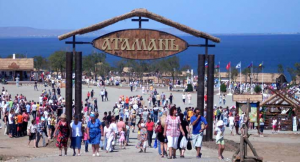 Village Atman is few kilometers west from Simferopol, the administrative centre of the Crimea. The name comes from the Greek Sympheropolis meaning ‘city of common good’. In the past Simferopol was known by other Greek name — The Scythian Neapolis. It was the ancient capital of the Crimean Scythians who lived on the territory from the 3rd century BC to the 4th century AD. They were the relatives of the co called Indo-Scythians or just Scythians (Saka), who migrated from Central Asia to India from the middle of the 2nd century BC to the 4th century AD.
Village Atman is few kilometers west from Simferopol, the administrative centre of the Crimea. The name comes from the Greek Sympheropolis meaning ‘city of common good’. In the past Simferopol was known by other Greek name — The Scythian Neapolis. It was the ancient capital of the Crimean Scythians who lived on the territory from the 3rd century BC to the 4th century AD. They were the relatives of the co called Indo-Scythians or just Scythians (Saka), who migrated from Central Asia to India from the middle of the 2nd century BC to the 4th century AD.
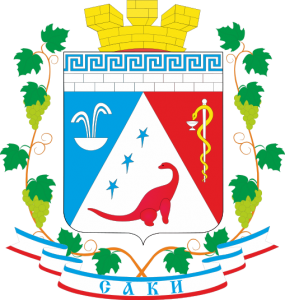 The ancestors of the Indo-Scythians are thought to be Saka (Scythian) tribes.
The ancestors of the Indo-Scythians are thought to be Saka (Scythian) tribes.
Town Saki (named after the Saka) is an old settlement on the west of the Crimean peninsula, 45 km. from Simferopol. It is widely known as the oldest balneological resort. Saki has a bronzosaurus on its coat of arms. That kind of dinosaurs lived about 152 to 151 million years ago and was among the largest animals ever to walk the Earth.
Gandhinagar is the capital of Gujarat. The new city was formed in 1960. It was named after Mahatma Gandhi, who was a Gujarati himself. Gandhinagar is one of only three government planned cities in India. The other two are Chandigarh and Bhubaneshwar. The responsibility of creating the new city was given to two Indian architects, both of whom had apprenticed with Le Corbusier during the construction of Chandigarh.
Gandhinagar is spread along the banks of the Sabarmati River. In Sanskrit, ‘sabar’ means nectar, milk, whereas ‘mati’ stands for intellect, worship, hymn, etc. Mati Gory is a historic settlement on the Northern Dvina River, situated ~90 km. south-east of Arkhangelsk mentioned in Section I. The administrative center of the Mati Gory district is Harlovo. Its root ‘har’ comes rather from Sanskrit. Sanskrit like names are common in the Russian North. Mati Gora is settlement near town Belomorsk that is the cultural center of Pomorye or the White Sea coasts that also includes the above mentioned Arkhangelsk region. In Russian, Gora means a mountain and Gory is plural meaning mountains or hills. Gori is the birthplace of Josef Stalin in Georgia and a settlement west of Karachi in Pakistan. See Appendix.
Some researchers identify the White Sea of Russia with the Ocean of milk in Hindu cosmology. The devas and asuras worked together for a millennium to churn the ocean and release Amrita the nectar of immortal life. See Osurovo in Yaroslavl region of Russia. They used the Serpent King Vasuki to churn the ocean. Vasyugan swamp in Western Siberia is the world’s largest wetland and a major reservoir of fresh water. For a churning stick they use Mount Mandara placed on the back of a Great Tortoise. In Sanskrit, a turtle is ‘kasyapa’ or legendary Kashyapa. Lord Siva (Shiva) had to take the poison issued out of the sea’s depths while the devas and asuras churned it. Siva’s epithet is Ugra or powerful, furious, etc. See Siva and Ugra rivers in Russia.
The most popular temple and tourist attraction in Gandhinagar is Akshardham or Hindu Swaminarayan temple. Its primary deity is Nara Narayan. See the Nara River in Moscow region. Swaminarayan centers exist in many countries beside India. The estimated worldwide following is 20 million. The founder of this Hindu sect was gifted spiritual leader Swaminarayan (1781 — 1830). He managed to restore the order and reduce criminal graph in Gujarat by preaching and educating high moral values. Born in Gujarat, Mahatma Gandhi (1869 — 1948) said that «the work accomplished by Swaminarayan in Gujarat could not and would never have been achieved by the law». There are close parallels between the works of Swaminarayan and Gandhi.
Temple architecture is also one of the most prominent features of the heritage of Swaminarayan. The temples constructed during his life show the priority of Krishna lived in Gujarat. See Section I. Swaminarayan constructed the first temple in 1822 in Ahmedabad that is ~25 km. south from Gandhinagar. He installed there deity pair Nara Narayana. The British officers made a symbolic 101 gun salute when the temple was opened.
Gandhidham was created in the early 1950s for the refugees from bordering Sindh province of Pakistan who came to India after the separation of Pakistan from India in 1947. It was named after Mahatma Gandhi (1869 –1948), the father of Indian nation. He wanted to make Hindu-Muslim unity in India.
Gandhidham is an economic capital of Kutch and it is a fast developing city in Gujarat state. Kandla is a seaport in Kutch District of Gujarat. Kandla is located on the above mentioned Gulf of Kutch, near Gandhidham. Kandla is one of major ports on western coast of India. Kandalaksha is Russian town and port of Kandalaksha Gulf on the White Sea, north of the Arctic Circle. See Section IV about a possible link of the Russian White Sea and the Ocean of milk of Hindu mythology.
Kandla was constructed in the 1950s after separation of India and Pakistan. Major seaport of Karachi was in Pakistan. Karachi was reputedly founded in 1729 as the settlement of Kolachi presumably named after a fisher woman who settled near the delta of the Indus 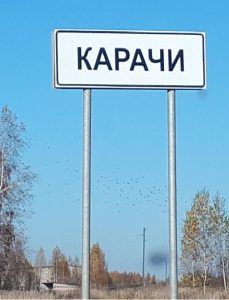 River to start a community. Indrus is the name of river in Vladimir region of Russia. In Russian, Kolachi means wheat breads in the form of a lock and with a handle. Moreover, settlement Karachi exists in Kirov region of Russia, ultimately related to Cyrus the Great, whose name in Russian is Kir.
River to start a community. Indrus is the name of river in Vladimir region of Russia. In Russian, Kolachi means wheat breads in the form of a lock and with a handle. Moreover, settlement Karachi exists in Kirov region of Russia, ultimately related to Cyrus the Great, whose name in Russian is Kir.
Vladimir region is located to the east of Moscow region. Karacharovo is a historical district of Moscow (east of center). Karacharovo on the left bank of the Oka River (See Section II) in Vladimir region is first scientifically researched Upper Paleolithic site in Russia. Karachar is the root, whereas ending ‘ovo’ means a status of rural settlement. Karacharovo is the name of number of villages in Moscow region, Tver region, Vladimir region, Yaroslavl region, etc. Karachay-Cherkessia is a republic of Russia located in the Northern Caucasus.
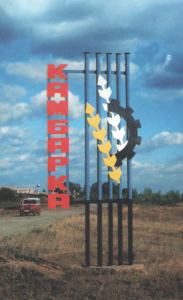 Karachi serves as the capital of Sindh province of Pakistan. Kambar is a city in this province. Kambarka is a town of the Udmurt Republic, Russia. It is named after the river Kambarka. This Russian town Kambarka is located where the Kambarka River enters into the Kama River. The Kama and Oka are among the largest inflows of the Volga River. The Kama’s source is 215 km. north of town Kambarka. The road is via town Chaikovsky located on the Kama River. It is named after the Russian composer Chaikovsky, who was born in the nearby town of Votkinsk. His surname is linked to chai. The best known Indian tea is Masala chai or spicy tea. In Sanskrit, kambara is a genus of plants in the ginger family. Name of Kambarka might be also liked to Sanskrit word Kumbakha for a pot and pitcher. See Kumbha.
Karachi serves as the capital of Sindh province of Pakistan. Kambar is a city in this province. Kambarka is a town of the Udmurt Republic, Russia. It is named after the river Kambarka. This Russian town Kambarka is located where the Kambarka River enters into the Kama River. The Kama and Oka are among the largest inflows of the Volga River. The Kama’s source is 215 km. north of town Kambarka. The road is via town Chaikovsky located on the Kama River. It is named after the Russian composer Chaikovsky, who was born in the nearby town of Votkinsk. His surname is linked to chai. The best known Indian tea is Masala chai or spicy tea. In Sanskrit, kambara is a genus of plants in the ginger family. Name of Kambarka might be also liked to Sanskrit word Kumbakha for a pot and pitcher. See Kumbha.
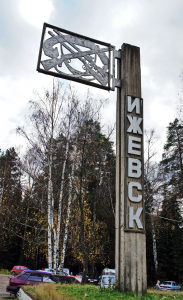 The sources of the Kama and Kambarka rivers are located in the above mentioned Udmurt Republic or Udmurtia that is a federal subject of Russia within the Volga Federal District. In Sanskrit, ‘uddamara’ means excellent, respectable, of high rank or consequence; murti means incarnation, embodiment, deity, etc. The capital city of Udmurtia is Izhevsk located near the confluence of the rivers Izh and Kama, both bearing Sanskrit names. In Sanskrit, ‘kama’ is desire and ‘iz’ means master, lord, and the supreme spirit.
The sources of the Kama and Kambarka rivers are located in the above mentioned Udmurt Republic or Udmurtia that is a federal subject of Russia within the Volga Federal District. In Sanskrit, ‘uddamara’ means excellent, respectable, of high rank or consequence; murti means incarnation, embodiment, deity, etc. The capital city of Udmurtia is Izhevsk located near the confluence of the rivers Izh and Kama, both bearing Sanskrit names. In Sanskrit, ‘kama’ is desire and ‘iz’ means master, lord, and the supreme spirit.
Izhevsk is named after this local river Izh and has the title of the Armory Capital of Russia. The world famous Kalashnikov or the world’s most common assault rifle AK-47 has been produced in Izhevsk since 1948 to present time. Its designer and the true master of efficient weaponry Mikhail Kalashnikov lived in Izhevsk until his death in 2013.
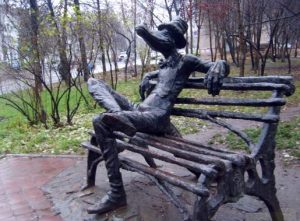 Izhevsk has a charming monument of crocodile, although crocodiles are not local species. There are different versions of the reasons. Some state that the origin of the monuments is the nickname for the Izhevsk factory gunsmiths — ‘Izhevsk crocodiles’. They were given green caftans for special achievements. Like Karachi, Izhevsk was found in 18th century. A legend about foundation of Karachi says that it was named in honour of a fisher woman, whose son is said to have slayed a man-eating crocodile.
Izhevsk has a charming monument of crocodile, although crocodiles are not local species. There are different versions of the reasons. Some state that the origin of the monuments is the nickname for the Izhevsk factory gunsmiths — ‘Izhevsk crocodiles’. They were given green caftans for special achievements. Like Karachi, Izhevsk was found in 18th century. A legend about foundation of Karachi says that it was named in honour of a fisher woman, whose son is said to have slayed a man-eating crocodile.
Izhevsk’s city day is June 12 that is Russia Day, i.e. the national holiday of the Russian Federation. In the center of Izhevsk there is a Buddhist Stupa of Health, Happiness and Well-being. Pakistan has a long history of Buddhism. See Pakistan and Buddhism.
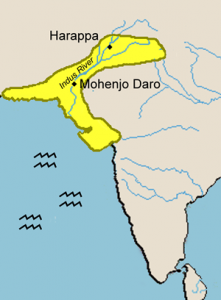 Kambar is just 30 km. north from the world famous Mohenjo-daro located near the Indus River, southwest of Sukkur. Mohenjo-daro is contemporary with the civilizations of ancient Egypt and Mesopotamia. Mohenjo-daro flourished during the third millennium BC and was one of the largest settlements of the ancient Indus Valley civilization (also known as the Harappan Civilization) which developed from the prehistoric culture.
Kambar is just 30 km. north from the world famous Mohenjo-daro located near the Indus River, southwest of Sukkur. Mohenjo-daro is contemporary with the civilizations of ancient Egypt and Mesopotamia. Mohenjo-daro flourished during the third millennium BC and was one of the largest settlements of the ancient Indus Valley civilization (also known as the Harappan Civilization) which developed from the prehistoric culture. 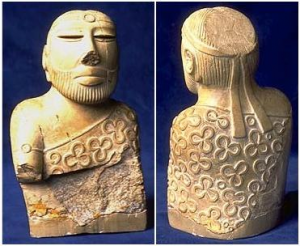 Interesting enough is the soapstone figure of a man found in Mohenjo-daro. The three circle motif on his cloak resembles the seal of Shambala.
Interesting enough is the soapstone figure of a man found in Mohenjo-daro. The three circle motif on his cloak resembles the seal of Shambala.
The above mentioned Sukkur has the largest single irrigation network of its kind in the world. The Nara Canal originates from the Sukkur Barrage, Eastern bank of Indus River, 80 km. north-east of the above mentioned Mohenjo-daro. Town Agra is on the way. See the Agra River in Vladimir region of Russia. The Nara is the longest canal in Pakistan, running for more than 360 km. It was built in the first half of the 20th century into the course of the old Nara River. See the Nara River in Moscow region that has number of rivers with Sanskrit names.
Kambar was a medieval Tamil poet in southern India. He was a great scholar of Sanskrit and Tamil languages. Kambar was the author of the Tamil version of Ramayana ascribed to the sage Valmiki.
Kambarka is a sister-city of Tooele, in the U.S. state of Utah. This origin of Tooele’ name is unclear. There are different hypothesis. One links it to Russian thistle, another to ‘tule’, a Spanish word of Aztec origin.
Tule is not just a kind of species or trees. It is a mythical northern country in Greek legend, ancient Hyperborea. It is described in the works of Helena Blavatsky, a founder of the Theosophical Society. Some have proposed that Tule could have been the name for Scandinavia. For sure, Scanda was an Indian deity. See Odin & Scanda.
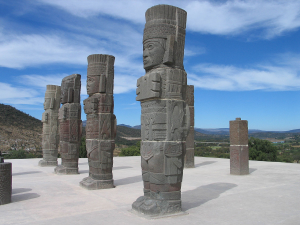 Tula is a world known Mesoamerican archeological site northwest of Mexico City. It was the capital of the Toltec Empire and important regional center. A legendary ruler of Tula was Quetzalcoatl. Its pyramid topped by four rather ancient astronauts is the main attraction of Tula. It fell in the middle of 12th century, but had significant influence in the following Aztec empire. When the Spanish arrived the feathered serpent god Quetzalcoatl linked to Tula was worshiped throughout Central America.
Tula is a world known Mesoamerican archeological site northwest of Mexico City. It was the capital of the Toltec Empire and important regional center. A legendary ruler of Tula was Quetzalcoatl. Its pyramid topped by four rather ancient astronauts is the main attraction of Tula. It fell in the middle of 12th century, but had significant influence in the following Aztec empire. When the Spanish arrived the feathered serpent god Quetzalcoatl linked to Tula was worshiped throughout Central America.
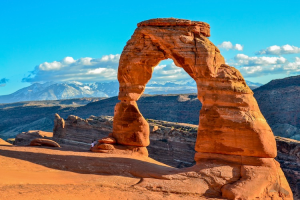 Among the main attractions of Utah is the world unique Arches National Park. Arka is synonyms of Sun god Surya and is a part of the name Dwarka whose literal meaning is ‘gateway to heaven’. See Section I.
Among the main attractions of Utah is the world unique Arches National Park. Arka is synonyms of Sun god Surya and is a part of the name Dwarka whose literal meaning is ‘gateway to heaven’. See Section I.
Delicate Arch is among the most popular in the park. Deli is the pronounced name of the Indian capital. See Russian village Deli in Tver region.
Appendix
Gori is a village located ~370 km. east of Karachi, near the border with Gujarat (India). Gori Jain temple is among Pakistan’s major archaeological monuments. 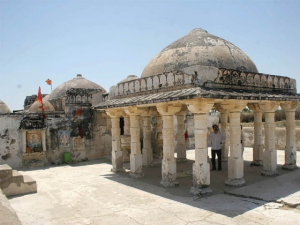 The temple was built in 14th century by a wealthy merchant who had been instructed in his dream by an angel. The Gori temple was dedicated to Lord Parshwanath, the 23rd Jain prophet who preached around the 8th century BC. At least a dozen major Indian Jain temples trace their heritage to Pakistan’s Gori temple. Jainism is one of the oldest religions and Parshwanath is among those who attract the most devotional worship of the Jains. He is credited with starting the tradition of ‘four fold restraints’ for monks – don’t kill, don’t steal, don’t lie and don’t own property.
The temple was built in 14th century by a wealthy merchant who had been instructed in his dream by an angel. The Gori temple was dedicated to Lord Parshwanath, the 23rd Jain prophet who preached around the 8th century BC. At least a dozen major Indian Jain temples trace their heritage to Pakistan’s Gori temple. Jainism is one of the oldest religions and Parshwanath is among those who attract the most devotional worship of the Jains. He is credited with starting the tradition of ‘four fold restraints’ for monks – don’t kill, don’t steal, don’t lie and don’t own property.
Parshwanath is said to have been born in Benares (Varanasi, India), renounced the worldly life and founded an ascetic community. Two centuries later Buddha would give his first sermon near that place. Buddhism and Jainism developed in the same what is now Bihar region of India. They share many features, terminology and ethical principles. It is generally believed that the successor of Parshwanath or the 24th Jain prophet Mahavira and Buddha were contemporaries (circa 5th century BC).
It is believed that Parshwanath preached for 70 years and died at the age of 100. His death is traditionally called by Jains as moksha (Sanskrit: moksa). Interestingly, Moskva is the Russian name of Moscow, the capital of the biggest country in the world.
In Sanskrit, ‘gauri’ means fair. Gori is used for fair-skinned (brides). Goritsy is a holy place in Vologa region of Russia. It is connected with Russia’s most popular Ivan Grozny (1530 — 1584). This title ‘Grozny’ has the same meaning as the Lord Siva’s epithet ‘Ugra’ in Sanskrit. Stalin recognized him as his teacher. See Siva and Ugra rivers in Russia.
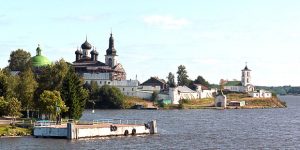 Goritsy female monastery is located near the Sanskrit named Maura hill. As it is said in Section IV, Gori in Georgia (Russian Empire) was the birthplace of Josef Stalin (1878 — 1953), one of the most powerful figures in human history. He adopted the surname Stalin after exile near Veliky Ustyug. It is the region with many Sanskrit names and ancient links with India. In the end, in Sanskrit, ‘sthalin‘ means possessing any vessel or receptacle.
Goritsy female monastery is located near the Sanskrit named Maura hill. As it is said in Section IV, Gori in Georgia (Russian Empire) was the birthplace of Josef Stalin (1878 — 1953), one of the most powerful figures in human history. He adopted the surname Stalin after exile near Veliky Ustyug. It is the region with many Sanskrit names and ancient links with India. In the end, in Sanskrit, ‘sthalin‘ means possessing any vessel or receptacle.
